

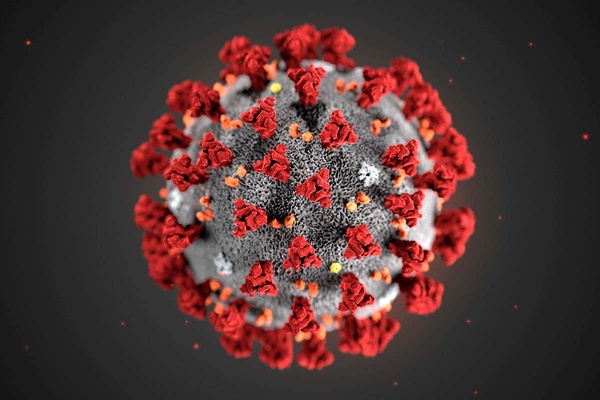
**************************************************************************************

UPDATED 1/17/2020
https://www.challengedesign.com/static/media/uploads/20-12-11_maxim_multiple_disinfection_testing.pdf
TEUFELBERGER SAYS:
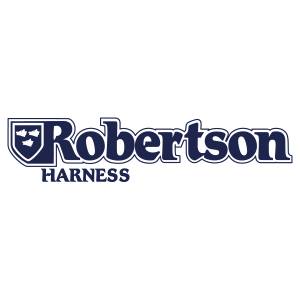
ROBERTSON HARNESS SAYS:
UPDATE with Cleaning Supply option 9/21/2020
keep products away from and do not use Bleach, Acids, and Detergents (including Woolite - it’s a detergent not a soap).
Recommendations from our webbing manufacturers are to hand wash harnesses in antibacterial soap or mild soap only (do not use woolite) with thorough rinsing and air dry.
Do not heat dry or dry in a machine dryer. Ensure the harness is completely dry to ensure no loss in tensile strength.
Sporicidin is recommended as a sanitizing solution.
Lifeline Cleaner is also a viable product that may also be used for sanitizing. It is biodegradable to US Standards, nontoxic, non-acidic, non-alkali, non-flammable and gentle to the skin.
General cleaning; multiple harnesses may be washed, using warm water with a mild soap solution. *Important- Do not use detergents
Hand Wash:
Product is best washed in a drum or container where it can be gently agitated by hand for 2 minutes. It is extremely important to rinse the harness thoroughly using cold water.
Spot cleaning; the harness can be cleaned using a sponge or something non-abrasive to the nylon fibers. Mild soap or Sporicidin may be used.
Drying Harness:
Allow the harness to dry by hanging it out of direct sunlight. Expect about 1 day to dry depending upon humidity. *Do not use dryers, or heat guns.
* If the web feels stiff after drying, this indicates soap may be within the nylon fibers left from the wash. The Harness will need to be rinsed thoroughly.
Note: never store a wet or damp Harness/lanyard
Important: Do not use detergents.

HEADRUSH TRUBLUE SAYS:
https://cdn2.hubspot.net/hubfs/5957371/website-docs/whitepapers/Disinfection_WP_03_20.pdf
Protecting and Disinfecting Your Devices
With the increase in COVID-19 across the globe, it's important to know it affects everybody, every business, and every product in a different way. Our products are used in high touch environments and we've received a handful of questions about how to clean/disinfect our products, specifically devices like TRUBLUE and QuickFlight/QUICKjump.
It is important to note that many cleaners and disinfectants are not suitable to be used with Head Rush products. If a device needs more than a simple dusting, customers should use a damp cloth with warm water and a mild detergent such as a dish soap to clean the device, carabiner, or webbing. Allow the unit to air dry after cleaning.
Certain disinfectants such as bleach or Lysol will chemically attack webbing and stitching and must not be used!
Head Rush has researched compatible disinfection agents and recommends a 70% Isopropyl Alcohol spray or wipe. DO NOT DILUTE. A 70% Isopropyl Alcohol can be sprayed or wiped on Head Rush carabiners and handgrips. We recommend spraying or wiping down the carabiner. For the hand grip, we recommend spraying the 70% Isopropyl Alcohol on a rag and wiping it in a downward motion towards the carabiner. This will help to keep the handgrip from becoming soaked. Do not soak the webbing. Do not spray Alcohol near heat sources or open flames as alcohol is flammable. Allow the device to air dry after disinfecting. Use only Isopropyl Alcohol as other types of alcohol will damage the webbing.

RECOMMENDATIONS FOR DISINFECTING YOUR EQUIPMENT
To clean PETZL PPE or other equipment, please follow the instructions provided in the technical notice for each product.
As a reminder, chemical cleaners damage plastics and textiles, breaking down the compounds and the fibers. The only cleaning products tested and recommended are soap and water.
In the specific case of COVID-19, hospital disinfection methods involve high temperatures (>150°C/302F) or low temperatures (<100°C/212F) and using bleach. We cannot apply these protocols to Petzl PPE or other equipment.
To date, no health authority has announced an official, reliable disinfection protocol using low temperatures (<100°C/212F) and without bleach.
With this in mind, we recommend using the following protocol:
To dry your equipment, please follow the instructions provided in the technical notice.
This protocol will highly reduce the risk of contamination, but of course is not 100% guaranteed. You can also request further information from your local health authorities concerning low temperature disinfection protocols.
PLEASE NOTE: Cleaning products developed by ECOLAB, when applied as instructed, are also compatible with all Petzl helmets and can be used. However, we do not know how effective ECOLAB’s products are in killing the coronavirus. Here is the link to the ECOLAB website for more information: https://en-uk.ecolab.com/

EDELRID SAYS:
A comprehensive updated statement as of 5/27/2020: https://www.challengedesign.com/static/media/uploads/edelrid-ppe-limitations-and-tolerances.pdf
https://drive.google.com/file/d/10TSi3sAIYxsnJUux5QCrKiaMP4KZvHjR/view
These days, at EDELRID we get a lot of questions regarding disinfection of PPE products to avoid contamination with the virus SARS-CoV-2, causing the corona virus disease COVID-19.
There are numerous disinfectants against SARS-CoV-21 of which we focused on isopropanol. In our study we wanted to test if our PPE products could be disinfected by isopropanol. The idea of this study was explicitly to test if the disinfectant is not harmful for our products. We cannot make any statement towards the efficiency against SARS- CoV-2.
In detail, we immersed polyamide (PA6), polyester (PET) and Dyneema® slings plus a dynamic climbing rope (PA6) in undiluted isopropanol (CAS: 67-63-0) for 24h and subsequently let everything air dry for at least another 24h. Afterwards, the residual strength of the slings and ropes was tested statically and dynamically, respectively.
As a result, we could not detect any significant loss of strength for all our tested products under these conditions. Thus we recommend the usage of 70% to 100% isopropanol to disinfect our PPE products as the performance will not be altered by it.
In addition, to ensure the usability of your PPE products, EDELRID recommends to clean them according to the instructions in the user manual. If you have any further questions, please do not hesitate to contact us.
With kind regards,
Your EDELRID- Team.


UPDATED 6/24/2020
SINGING ROCK SAYS:
https://www.challengedesign.com/static/media/uploads/singing_rock_ppe_cleaning_updated_6-24-2020.pdf
https://www.singingrock.com/covid-19-disinfection
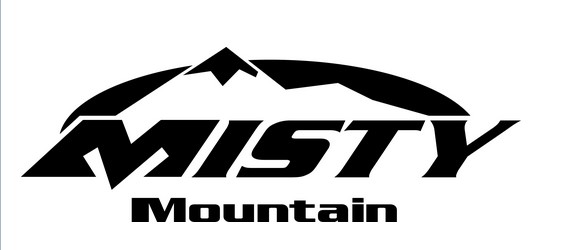
Unfortunately, the standard methods of sterilization, such as steam, irradiation, UV light, or chemical washes, aren't suitable for the synthetic fibers we use to manufacture gear.
Misty Mountain's recommendation is to hand wash gear, or use a tumbling drum washing machine (no agitator), at high heat (Max 150F/65C) with soap.
Do not use oxidizing agents or chemicals, such as bleach, as these can damage synthetic fibers.
Air dry in the shade for best results.
Although these measures may not kill all viruses or bacteria, they are the best solution for cleaning and maintaining the structural integrity of your Misty Mountain harnesses, lanyards, and other PPE. If you are concerned the gear has come in contact with and been contaminated by Coronavirus/Covid19, the best choice would be to wash, dry and quarantine the gear for a minimum of 14 days.
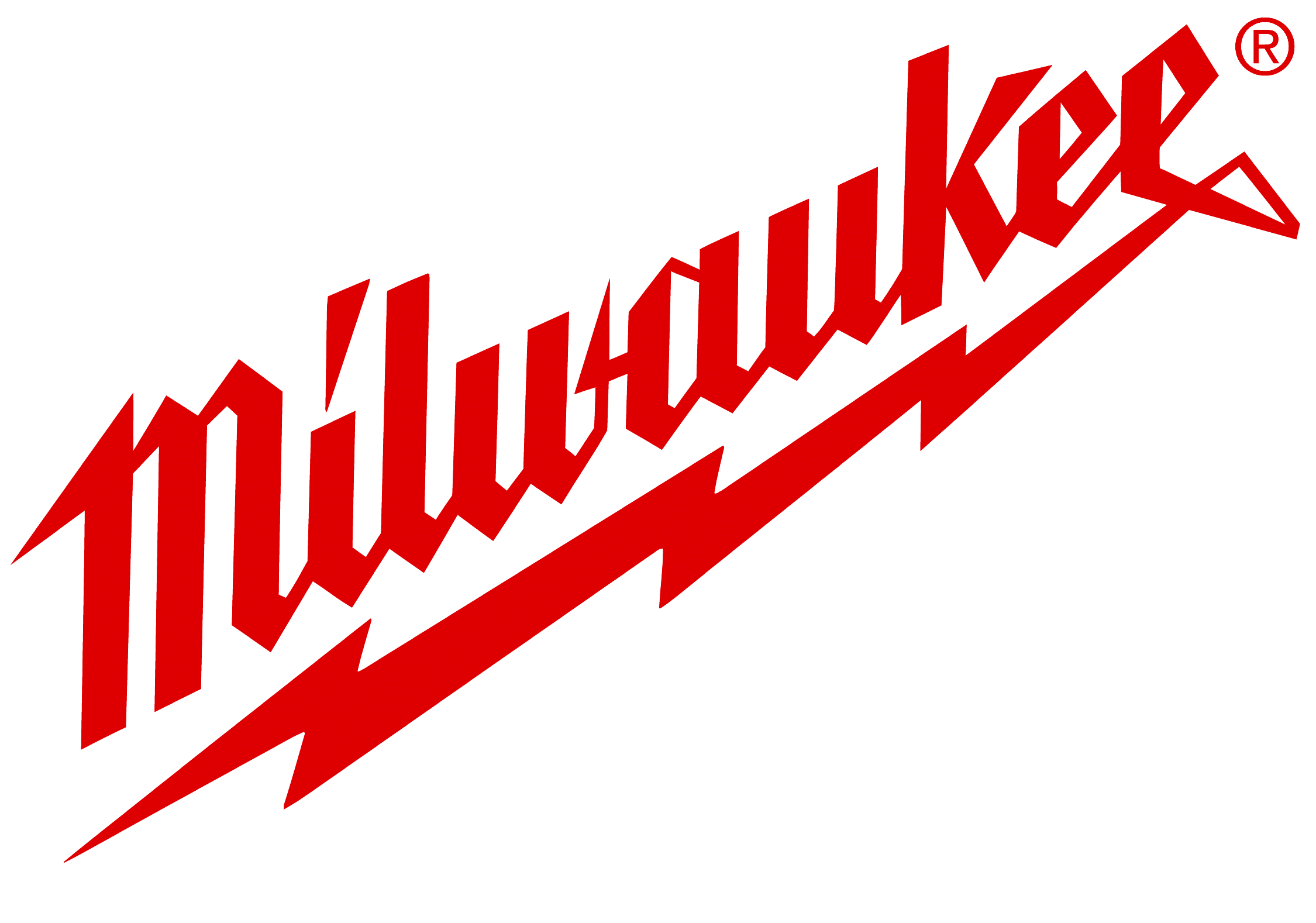
MILWAUKEE TOOLS SAYS:
https://documents.milwaukeetool.com/Tool-Cleaning-Protocols-Milwaukee-Tool.pdf
CLEANING OF TOOLS TO HELP PREVENT SPREAD OF COVID-19
Should a tool need to be cleaned that does not have blood or visible bodily fluids on it, Milwaukee® recommends the following protocol. This protocol is subject to the recommendations of the Centers for Disease Control (“CDC”), OSHA, and those of State and Local health departments. Please follow applicable guidelines of these agencies.
CLEANING OPTIONS:
A properly diluted bleach solution can be made by mixing:

COLORADO DEPT OF TRANSPORTATION REGARDING VEHICLE CLEANING SAYS:
https://www.codot.gov/vehiclecleaningprocedure.pdf
ROCKS EDGE GEAR SAYS:
During the COVID-19 (“Coronavirus”) pandemic we have been told by experts to wash our hands frequently for at least 20 seconds and wear masks to slow the spread of the virus. But, how should you clean and disinfect Rocks Edge gloves and hand brake straps?
The Center for Disease Control (CDC) says that cleaning refers to removing germs from surfaces and disinfecting refers to killing germs. Both will be needed in this case.
What kills or neutralizes the virus is when its outer shell dries out or is damaged. The shell is a thin protective gel-like fat layer. If you can dry it out or break open the outer shell, then the virus will be dead/neutralized. With the Novel Coronavirus COVID-19, the virus can be neutralized as fast as in 20 seconds. But sometimes, when you just disinfect a surface with a cleaner, it can take up to 5 to 6 minutes for that protective layer to deteriorate. So, disinfecting AND cleaning is your best bet.
A recent study from scientists at the National Institutes of Health (NIH), and published in the New England Journal of Medicine[1], found that the Coronavirus can live for 4 hours on copper, 24 hours on cardboard and 72 hours on steel or plastic. And the Coronavirus can live for up to 3 hours in the air. Epidemiologists say that viruses live longer on smooth surfaces that don’t have many pores in them, like glass doors, doorknobs, and tables. The reason porous surfaces like leather, wood, money, cardboard, and fabric don't allow viruses to live as long is because the small holes or spaces in them can trap the microbes and keep them from transferring.
While no study has been done (to date that we can find) that definitively states how leather gloves and other leather goods should be disinfected for COVID-19 specifically, there has been a lot of advice from the CDC that recommends using soap and water to wash hands and other items to both clean and disinfect COVID-19.
Using soap and water, which is the standard procedure for washing leather gloves in general, even before COVID-19, appears to be the most effective way to also clean and disinfect Rocks Edge gear for COVID-19 concerns.
Chemical sanitizers such as rubbing alcohol, peroxide, and bleaches, while effective, are not necessary to disinfect and can cause damage your items.
To Clean Rocks Edge Gloves and Hand Brake Straps:
1) Immerse items in hot, soapy water (86F-150F). A sink, bucket, or bin could be used.
Baby shampoo work well as it has few “extra” ingredients and it has a pH of 5.5 or lower which is good for leather in general.
DO NOT put the items into a washer machine or dryer.
2) Agitate the items rigorously for a minimum of 20 seconds to help break down the outer shell of the virus. Make sure every nook and cranny gets wet and soapy. Longer would be better since every part of the items needs to be covered in the soapy water for a minimum of 20 seconds.
3) Remove the items and let them air dry. DO NOT put the items into a washer machine or dryer.
It is OK to use leather conditioners on the leather afterward, according to the directions of the conditioner.
Be sure to clean the floors, bins, areas etc that were in contact with the items before they were cleaned with the same soap and water mix.
! NOTE ! The above procedures have not been scientifically tested on Rocks Edge equipment and COVID-19. It is likely not possible to carry out or guarantee complete disinfection, the goal is to minimize transmission risk.
[1] https://hub.jhu.edu/2020/03/20/sars-cov-2-survive-on-surfaces/

“In order to limit the spread of the COVID-19 virus and to comply with sanitary measures, we recommend the use of [a] hydroalcoholic solution to clean the connectors (plastic handles and aluminum housing). Protect your hands with disposable gloves and apply the product with a cloth. This procedure is safe for your lanyards.”

https://www.iscwales.com/News/Press-Releases/COVID-19-Cleaning-Hardware/
April 27th 2020
We are receiving requests about the correct disinfection procedures for our personal protective equipment, with regards SARS-CoV-2 (COVID-19).
COVID-19 is new to all of us and as such the information is changing regularly, however, there have been some trials and studies conducted to understand the Stability of SARS-CoV-2 in different environmental conditions. A copy of the Test results, published in the Supplementary appendix of the article by Chin A W H, Chu J T S, Perera M R A, et al. Stability of SARS-CoV-2 in different environmental conditions. Lancet Microbe 2020; published online April 2., can be viewed by clicking on the link.
As standard, ISC recommends that our products can be cleaned using a mild detergent and water with a temperature of 40C [104F]. Following the cleaning procedure which includes detergents, the items should be rinsed in cold water. The device should then be allowed to dry naturally in a well-ventilated area away from any direct heat source.
The general consensus is that Bleach, Alcohol or Hydrogen Peroxide based products are the best options to remove the risk of transmission of Covid-19 from high-touch metallic items, without the ability to go through the full clean, wash and dry procedure. Since Alcohol-based products are the easiest to control, it is suggested that a solution of 70% IPA [Isopropyl alcohol] would be a good option for wiping down product surfaces.
There is some evidence that some solutions containing bleach can damage webbing and stitching, so for webbing products, ISC recommends following the prescribed cleaning procedure as the best option.
There is evidence that using just hot water at 56C [133F] for 30 minutes shows no presence of the coronavirus – see test results, published in the Supplementary appendix of the article by Chin A W H, Chu J T S, Perera M R A, et al. Stability of SARS-CoV-2 in different environmental conditions. Lancet Microbe 2020 and the study performed by U.S. Department of Agriculture, Forest Service, National Technology and Development Program, “Effects of Pathogen Decontamination on the Strength of Climbing Rope and Harness Equipment” which suggested that it is possible to soak textiles in water up to 55C [131F] with little effect to overall strength.
ISC also advises that you contact the specific rope or harness manufacturer for bespoke inspection and care instructions pertaining to your particular products in use. Included with this notice is information specific to Teufelberger.
Disclaimer: All of ISC recommended disinfecting solutions are advisory only. ISC assumes no liability for improper use of the products. It is the user’s responsibility to inspect their gear before each use, and should any doubt arise about its condition for safe use, the product should be immediately withdrawn from use and not used again until confirmed in writing by a competent person that it is safe to do so. Users should additionally follow government guidance relating to general rules to minimise the transmission of COVID-19.

French Creek / Adrenalin Gear Says:
https://www.challengedesign.com/static/media/uploads/french_creek_recommendation_equipment_cleaning_may_2020.pdf
May 4, 2020
Subject: Recommendations for Disinfecting your Equipment
Numerous parties have contacted FrenchCreek asking for advice on how to disinfect equipment to prevent the transmission of the virus that causes COVID-19. We have sought instruction from our vendors, the webbing mills, and the fiber manufacturers.
Recently there have been a few suggestions for disinfecting equipment using several different methods. Most of these methods involve chemicals, alcohol solutions, and disinfecting agents. There is some anecdotal testing using some of these methods to disinfect the equipment. However, there has not
been any data collected on the long-term effects of using chemicals or disinfecting agents on webbing/fibers, protective coatings. There can be a possibility of loss of strength, abrasion resistance, and resistance to environmental conditions.
Some additional methods that have been mentioned are steam cleaning, UV light, and others. Each of these treatments presents its own problems that can alter the equipment’s characteristics. In none of these methods, has there been any data collected on the long-term effects on the webbing/fibers of the equipment. Possible proposed solutions have not been scientifically tested, nor studied in a controlled environment that could produce any analysis that can be effectively put into common practice.
It is FrenchCreek’s recommendation that users continue with the established protocol for cleaning equipment.
The only cleaning products recommended are the use of water and soap or a mild dish soap.
Do not use bleach, cleaning chemicals or disinfectants.
The equipment should be washed with a diluted solution of soap and water. Do not use aggressive cleaning tools. Ensure the entire surface of the equipment has been applied with the solution. A soft sponge or rag may be used lightly to rub the equipment.
The equipment should be thoroughly rinsed. Run clean water over the equipment to remove any foreign substances and residual soap. Do not use a pressure sprayer of any type. The equipment should be dried by hanging in a cool, dry shaded area with ventilation. Avoid direct sunlight or baking the equipment in the sun.
Following these procedures is consistent with long-standing practices in the care and maintenance of these types of soft goods. It is always the responsibility of the user for proper inspection, care, and use of the equipment.
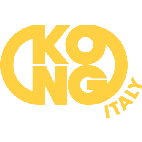
KONG SAYS:
https://www.challengedesign.com/static/media/uploads/kong_sars-cov-2_disinfection_it_en1.pdf
DISINFECTING KONG PRODUCTS FROM SARS-CoV-2
KONG S.p.A., on the basis of the scientific studies currently considered to be most reliable (the references of which are given at the bottom), defines in this document the methods of disinfecting its products from the SARS-CoV-2 virus, leaving to the users the choice the method they consider most appropriate to their needs.
These methods, even if carried out several times on the same product, do not alter its strength characteristics.
Disinfection in hot water
Immerse the product for at least 30 minutes in hot water at a temperature of 58-60° C (136-140 °F) and then leave it to air dry avoiding direct exposure to the sun or heat sources.
!!! Do not use this method for disinfecting Dyneema® and aramid products (ex. Kevlar® ).
Soap wash
Wash the product for at least 15 minutes in lukewarm water at a temperature of 30-32 ° C (86-90 ° F) with soap (pH 5.5-8.5) and then leave it to air dry avoiding direct exposure to the sun or heat sources.
Quarantine period
Place the device in a well-ventilated area, avoiding direct exposure to the sun or heat sources, for at least 7 days.
!!! Due to the lack of established and reliable scientific studies, what is reported in the "General Information" attached to Kong products is to be considered general in nature, but does not guarantee reliable results in the fight against the SARS-CoV-2 virus
Scientific references
- Test results published on April 2, 2020 in the supplementary appendix of the article "Stability of SARS-CoV-2 in different environmental conditions. Lancet Microbe 2020"
- The study "Effects of pathogen decontamination on the strength of climbing rope and harness equipment" conducted by the United States Department of Agriculture, Forest Service and National Technology & Development Program.
Monte Marenzo,22 April 2020 KONG S.p.A.
President
/S/ Dr. Marco Bonaiti

PERFECT DESCENT SAYS:
https://www.perfectdescent.com/articles/covid-19-cleaning-and-disinfecting-guidelines/
Perfect Descent Auto Belays can be a valuable tool to help manage physical distancing and the flow of people in climbing gyms. Auto belay routes eliminate close contact with belay partners and restrict high-touch points to several easy-to-clean areas. While there remains a lot to be learned about climbing gym operations during the COVID-19 pandemic, climbing gym operators can take a few simple steps to consistently clean and disinfect Perfect Descent Auto Belays.
Cleaning and disinfecting are distinct processes, the combination of which, can lower the risk of spreading infection. As defined by the CDC, cleaning refers to the removal of germs, dirt, and other impurities from surfaces; this process does not kill germs but rather, lowers their numbers. Disinfecting refers to the use of chemicals, such as EPA-registered disinfectants, to kill germs on surfaces.
The long-term impact of repeated and prolonged exposure to chemical disinfectants on the Perfect Descent lanyard is not yet fully understood. We are currently conducting tests intended to measure any potential reduction in material strength from applications of ethanol and isopropanol.
Until testing is complete, we DO NOT recommend the application of any chemical disinfectant directly on the textile lanyard.
A Lanyard Guard should be used when the regular application of chemical disinfectants is desired.
The Lanyard Guard is a flexible protective sleeve that can be added to any Perfect Descent lanyard and fits snugly and securely over the lanyard leader. The Lanyard Guard creates a protective surface that can be repeatedly cleaned and disinfected while minimizing exposure to potentially damaging chemicals. Lanyard Guards can be purchased from any authorized Perfect Descent Reseller.
Certain chemicals are known to weaken the textile materials used in the construction of Perfect Descent lanyards and may damage other product finishes and labels. Please take care when using chemical disinfectants in your facility, and replace any lanyard suspected to have come in contact with chemical agents.
Prior to disinfecting any part of the Perfect Descent Auto Belay, it must first be cleaned to remove chalk, dirt, or other contamination. Use a clean, damp cloth to wipe down the device. If needed, a mild soap or detergent such as dish soap can be used. DO NOT use abrasives to scour the housing as they may damage the plating and labels. NEVER immerse the product in water or other liquid. If water gets into the housing, hang the device and slowly extract the entire lanyard, allowing the water to run out of the nozzle opening at the bottom of the device. Leave the lanyard extracted until dry.
After cleaning the auto belay outer housing, wipe down the surface with a clean cloth sprayed with 70% ethanol or 70% isopropanol. DO NOT dilute. Allow the device to air dry in a clean environment and away from heat sources, open flame, and direct sunlight.
The Perfect Descent lanyard and carabiner are high-touch points that may require more frequent cleaning and disinfection than the rest of the device. Care should be taken to avoid any chemical contact with the textile lanyard, and a Lanyard Guard should be used when repeated chemical disinfection to the Lanyard Leader (the black portion of lanyard directly above the carabiner) is desired. NEVER store a wet or damp lanyard while retracted in the unit.
1. Remove the lanyard from the device;
2. Hand wash* using a mild soap or detergent in cold or warm water, NOT hot;
3. Dry the carabiner with a clean cloth and allow the lanyard to completely air dry in a clean environment and away from heat sources, open flame, and direct sunlight;
4. Inspect the carabiner for proper function and lubricate as needed;
5. Reinstall the lanyard.
*Note: While hand washing is recommended, you can wash your lanyards in a washing machine (without agitator), on gentle cycle, with a mild soap or detergent. Even when taking care to pad the carabiner, damage may occur to the interior surface of the machine’s drum.
NEVER place your Perfect Descent lanyard in a dryer.
Perfect Descent is currently testing the effects of repeated and prolonged exposure to certain disinfectants on our lanyards. At this time, we DO NOT recommend the application of any chemical disinfectant directly on the textile lanyard. A Lanyard Guard should be used when regular application of chemical disinfectants is desired.
To install the Lanyard Guard, simply remove the lanyard from the auto belay and thread it through the tubing. [Watch Installation Video for step by step instructions.] Reinstall the lanyard. Once installed, use a clean cloth sprayed with 70% ethanol or 70% isopropanol to wipe the Lanyard Guard and carabiner and allow to air dry. DO NOT allow ethanol or isopropanol to contact the lanyard as this may weaken the lanyard. The use of ethanol or isopropanol on the carabiner may require more frequent lubrication of the gate hinge, swivel, and collar. Remove any carabiner from service with a gate that does not properly close and lock.
For more information or questions, reach us directly at info@perfectdescent.com.

DMM SAYS:
https://www.challengedesign.com/static/media/uploads/dmm-covid-19-gear.pdf
COVID-19: Care, Cleaning & Disinfection of DMM Equipment
COVID-19 is a relatively new virus, and as such, knowledge relating to successful disinfection of items is growing and evolving rapidly. DMM is therefore unable, at this time, to guarantee the efficacy of any disinfection technique.
We do however recognise that there is a need for manufacturers to provide user guidance to help them manage the risks as best they can. Therefore, we suggest the following.
Whenever practicable ensure that your equipment is personal issue (i.e. not shared) and that you know its usage, exposure to potential contamination, and its cleaning and disinfection regime.
If it is believed that there is a risk that equipment has been exposed to a source of COVID-19 contamination, we recommend that you follow all guidance from relevant authorities to ensure that neither you, nor others, are put at risk.
Remove the item from service, label & place securely in a controlled and well-ventilated quarantine area.
At this stage we see 3 distinct paths out of quarantine:
• Dispose - Render the items unusable and dispose of in a safe manner; or
• Time – Leave in quarantine for at least 72hrs; and/or
• Wash – In 30⁰ C [86F] clean domestic grade water with liquid soap in the pH range 5.5 to 8.5 for 15 minutes (Our usual instructions state maximum 25⁰ C [77F] , but we are implementing a temporary raise to 30⁰ C [86F] ). Rinse thoroughly. Dry naturally - away from direct heat.
Ensure free movement of air around the equipment both during quarantine and when drying after washing.
All other standard storage and cleaning instructions apply throughout this process.
Please refer to product-specific user instructions. Ensure that it is not possible for anyone to be put at risk whichever option you choose. All products returned to service should undergo the standard pre-use inspection. We will continue to monitor information on this topic and will update our guidance in line with evolving best practice.
Sources:
https://www.nejm.org/doi/full/10.1056/NEJMc2004973
https://www.thelancet.com/journals/lanmic/article/PIIS2666-5247(20)30003-3/fulltex
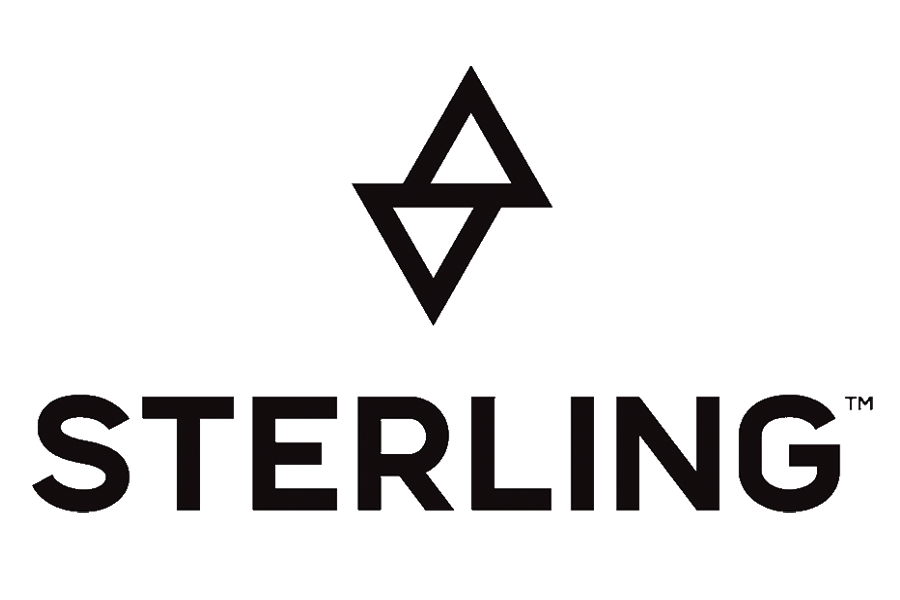
STERLING ROPE SAYS:
https://sterlingrope.com/logbook/8-blog/326-cleaning-and-disinfecting-your-climbing-equipment?utm_campaign=512955_IP%20Warmup%20Creative%202_day%207&utm_medium=email&utm_source=Sterling%20Rope%20Co.%20Inc.&dm_i=6D70,AZSR,4PCBTT,159XT,1
We put together the following recommendations to help answer some of your questions about your ropes and equipment regarding the novel Corona virus, COVID-19 and other contaminates.
Sterling has conducted testing on two disinfectant cleaners and have identified that these two cleaners, when applied properly, do not significantly degrade nylon or polyester ropes.
It is important to note that we have not conducted specific testing on the Corona virus or COVID-19 and therefore cannot guarantee that the below procedures will, in fact, eliminate the virus or stop the spread of infection.
This disinfectant is commonly used in the cruise line industry for disinfecting climbing ropes. Our testing demonstrated no measurable reduction in strength on nylon ropes when spray applied at a 1:64 concentration.
This disinfectant was tested using a washing machine at a 1:128 concentration. No measurable reduction in strength of nylon and polyester ropes was measured.
Other disinfectants may also be compatible with synthetic ropes however; at this time we only have reliable test data on the above mentioned cleaners. It is the responsibility of the user to identify the safest and most effective disinfectant for your gear.
As with all life-safety equipment, when the integrity of your gear is in question, it is always prudent to replace it.
Don’t touch your gear if you believe you are infected or bring it someplace where it may be contaminated.
Use of hand sanitizer before coming in contact with climbing equipment should have no negative effect on your gear.
Washing your rope and gear with Wicked Good Rope Wash is a good way to clean it but it is not a disinfectant. Check out blog post for an in-depth guide on washing your rope.
From the CDC Website: “It may be possible that a person can get COVID-19 by touching a surface or object that has the virus on it and then touching their own mouth, nose, or possibly their eyes, but this is not thought to be the main way the virus spreads.”
Please refer to local, state or federal guidelines for the best practices to minimize the spread of this virus.
